Experimental Study in a Cascade Row for Improving the Performance of a Partially Admitted Turbo-Expander
Abstract
:1. Introduction
2. Experimental Apparatus
2.1. Linear Cascade
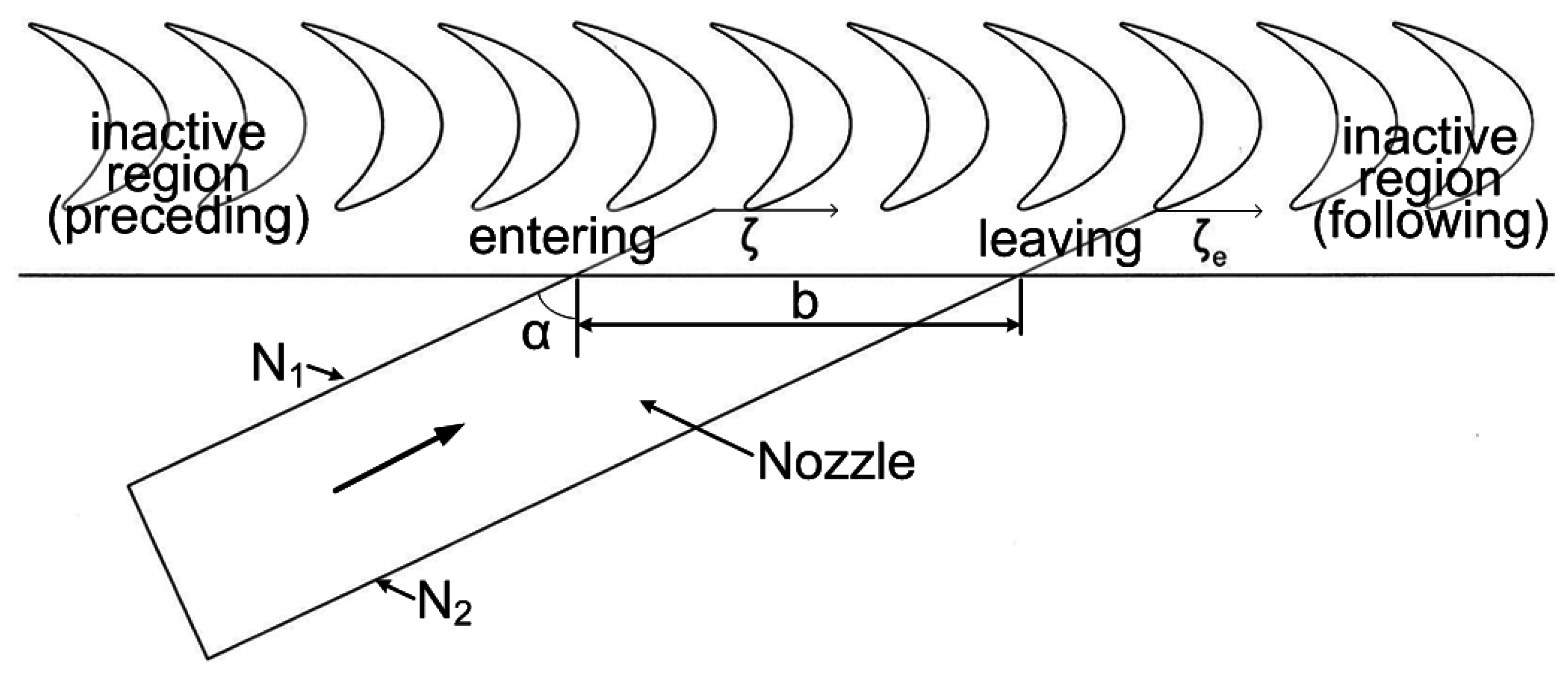
2.2. Pressure Holes on the Blade Surface
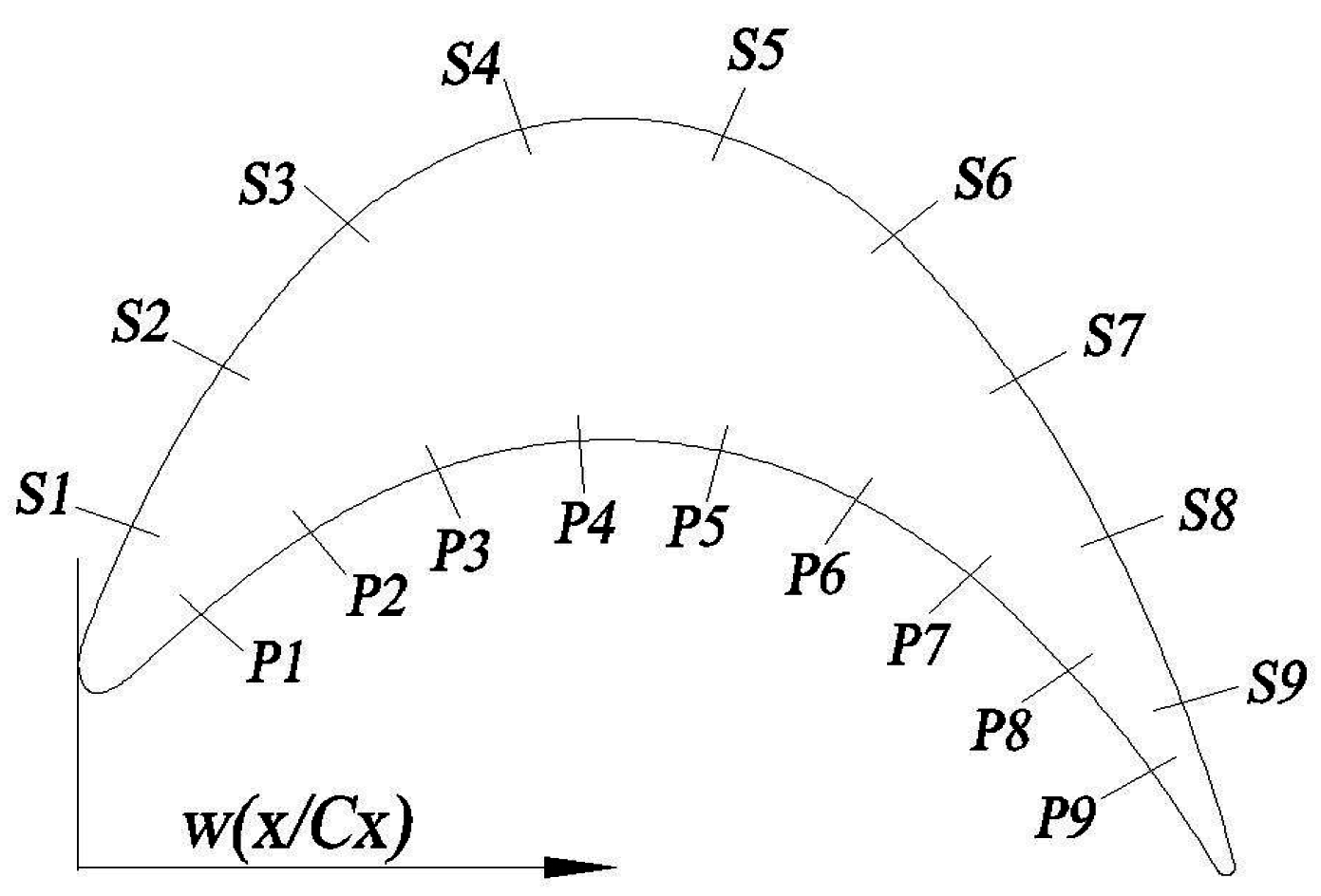
| Pressure Taps | Suction (x/Cx) | Pressure (x/Cx) |
|---|---|---|
| S1, P1 | 0.046 | 0.106 |
| S2, P2 | 0.125 | 0.201 |
| S3, P3 | 0.232 | 0.320 |
| S4, P4 | 0.383 | 0.433 |
| S5, P5 | 0.558 | 0.555 |
| S6, P6 | 0.705 | 0.672 |
| S7, P7 | 0.810 | 0.771 |
| S8, P8 | 0.891 | 0.856 |
| S9, P9 | 0.954 | 0.927 |
2.3. Devices for Force Measurement
| Contents | Accuracy | Remarks |
|---|---|---|
| Rated capacities | 50 N | For each component |
| Nonlinearity | ± 0.5% at full scale | For each component force and moment |
| Hysteresis | ± 0.5% at full scale | For each component force and moment |
| Temperature effect | 0.06% F.S./°C at full scale | For each component force |
| Maker/model | - | CasKorea/MAS110-5L |
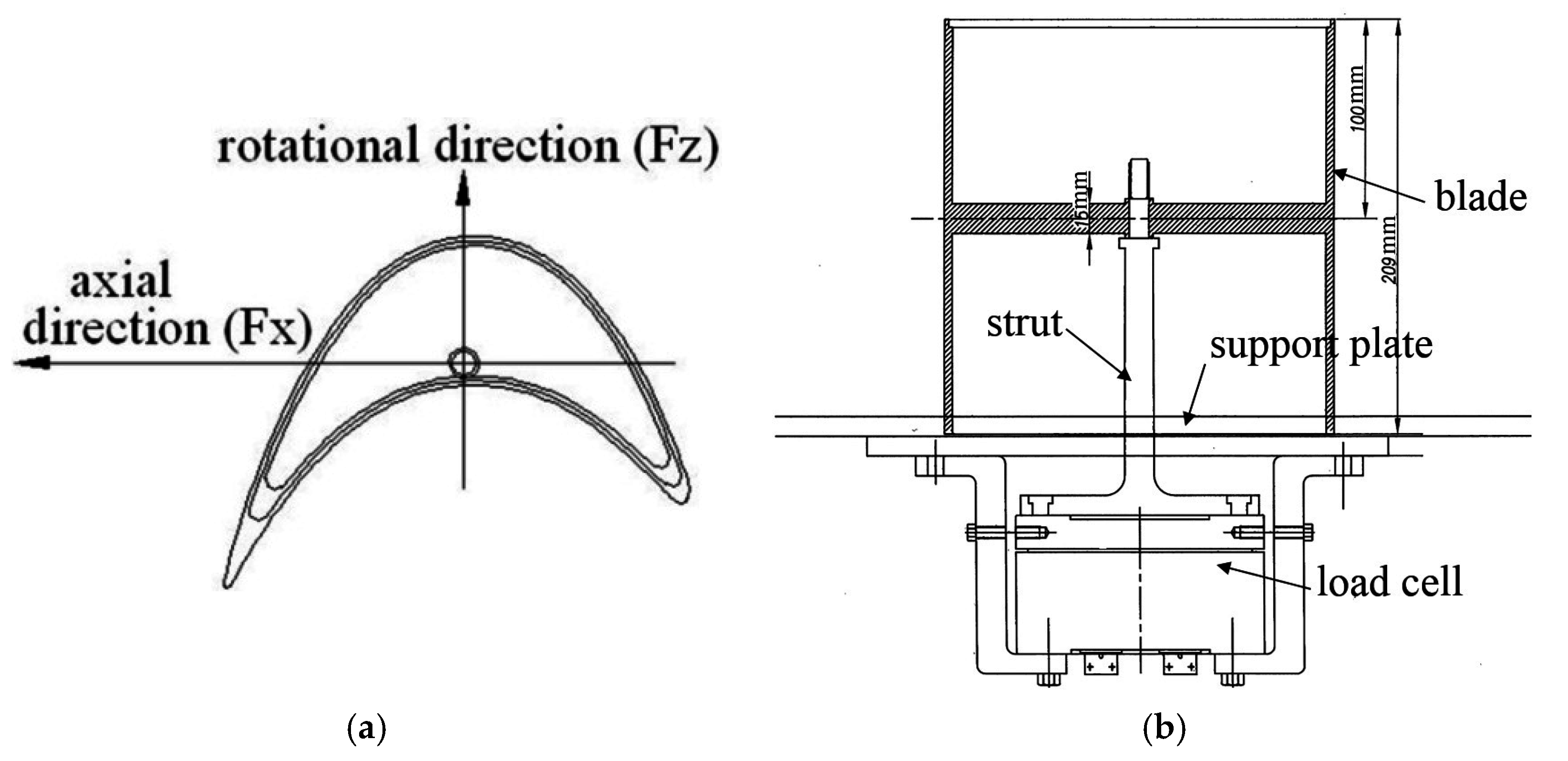
3. Experimental Result and Discussion
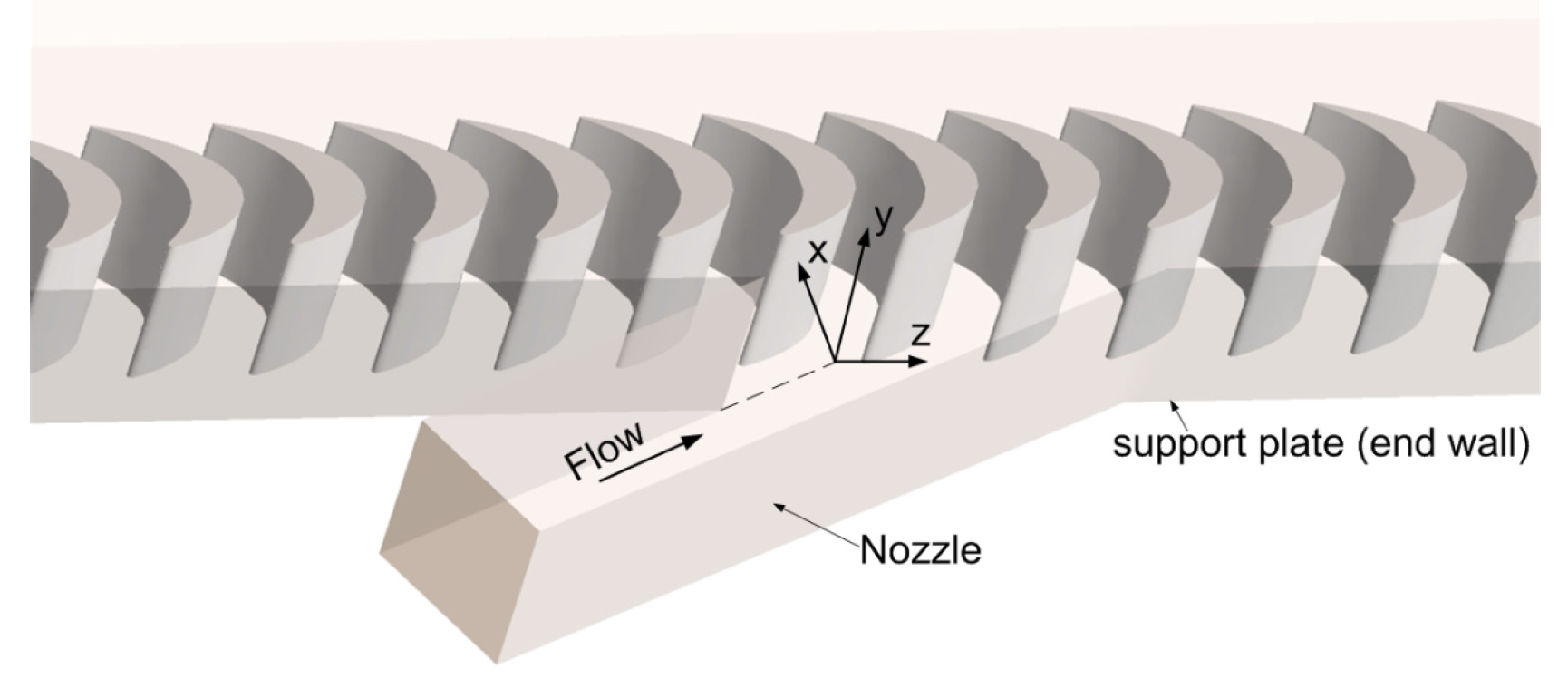
3.1. Nozzle Flow Angle of α = 65°
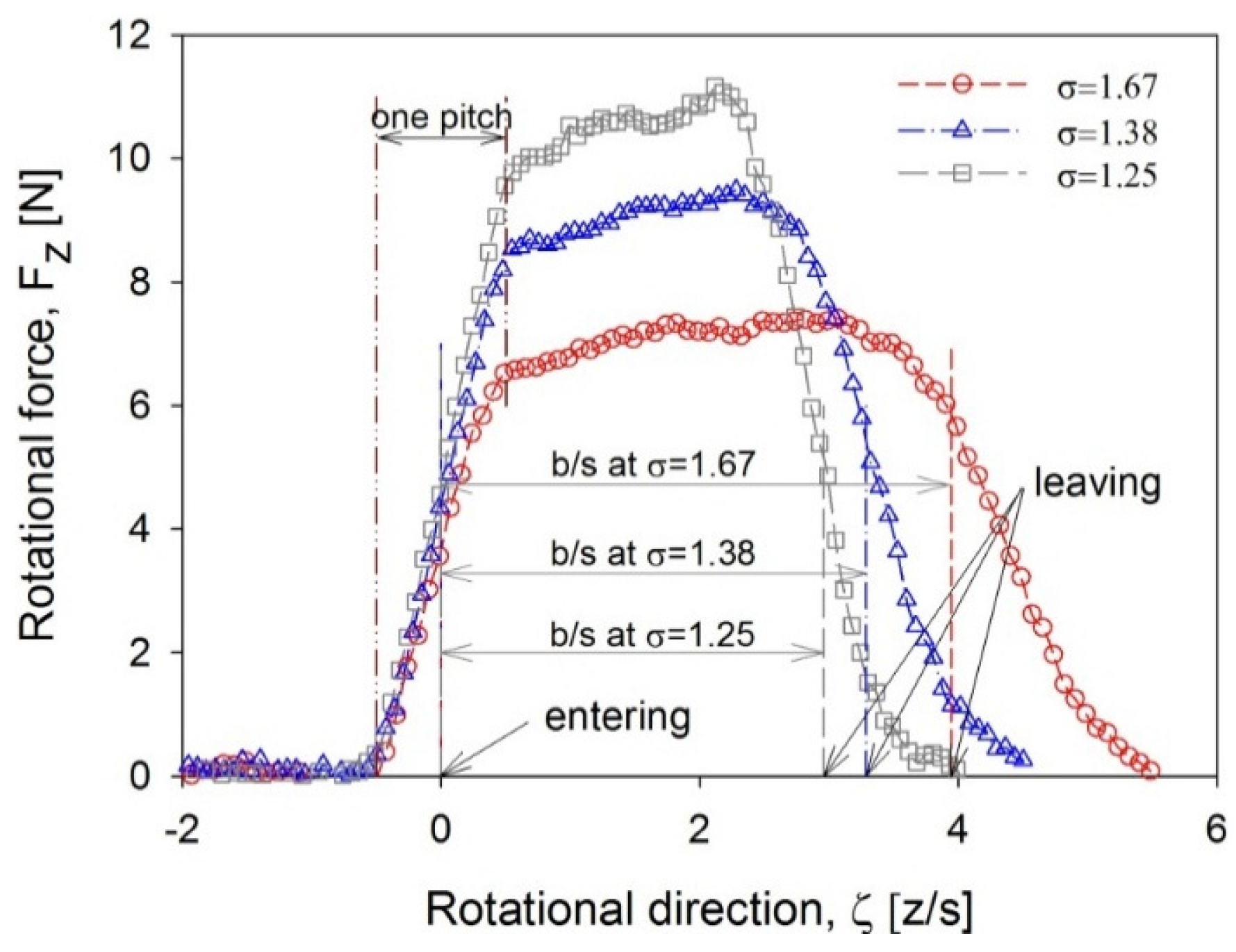
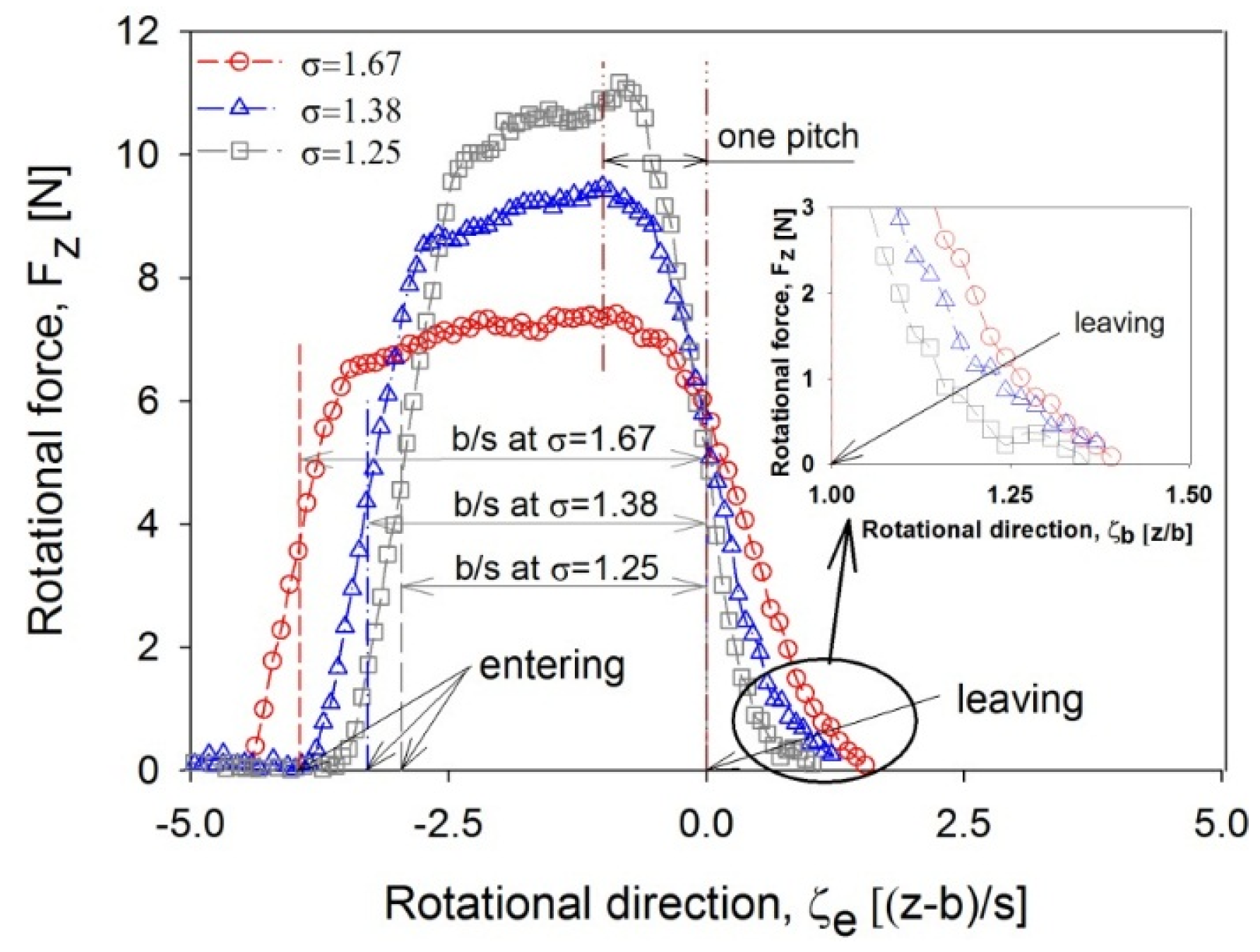

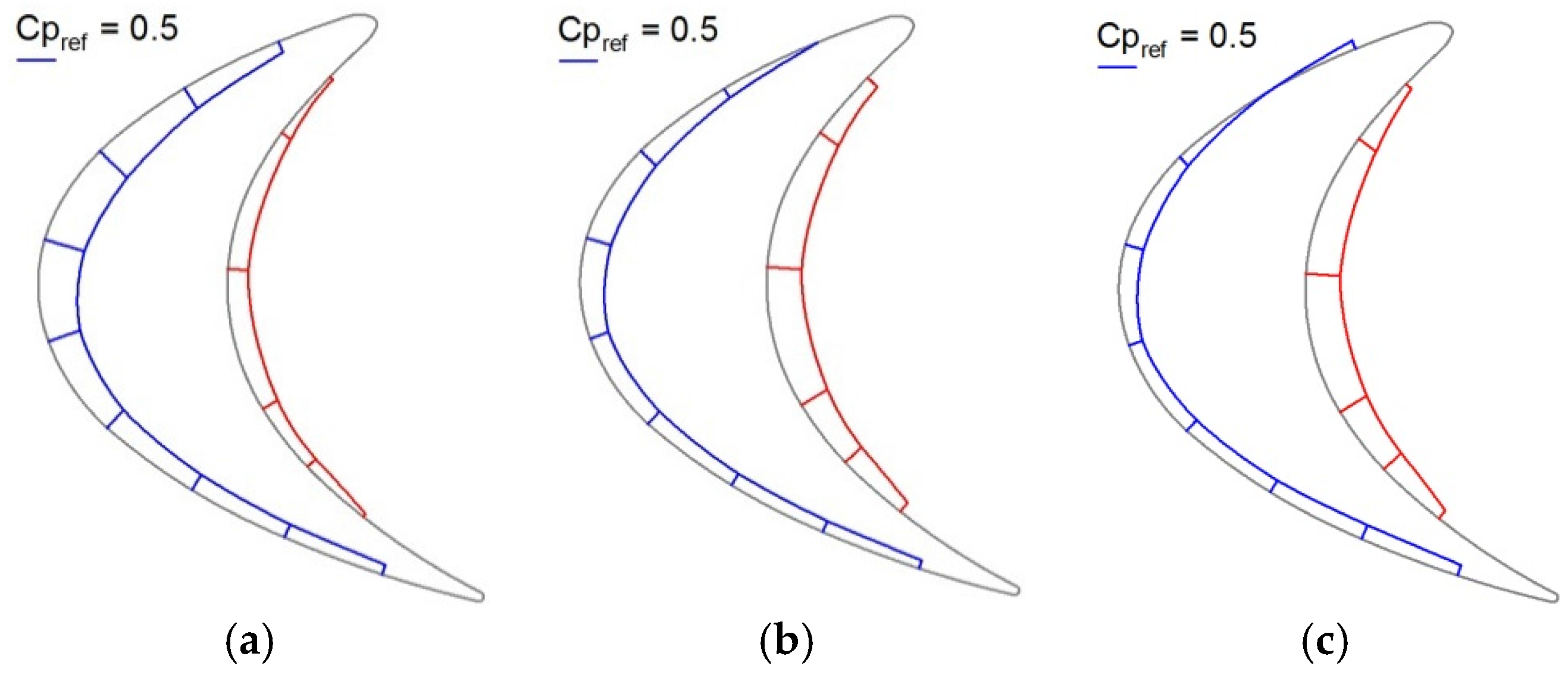
3.2. Nozzle Flow Angle of α = 72°
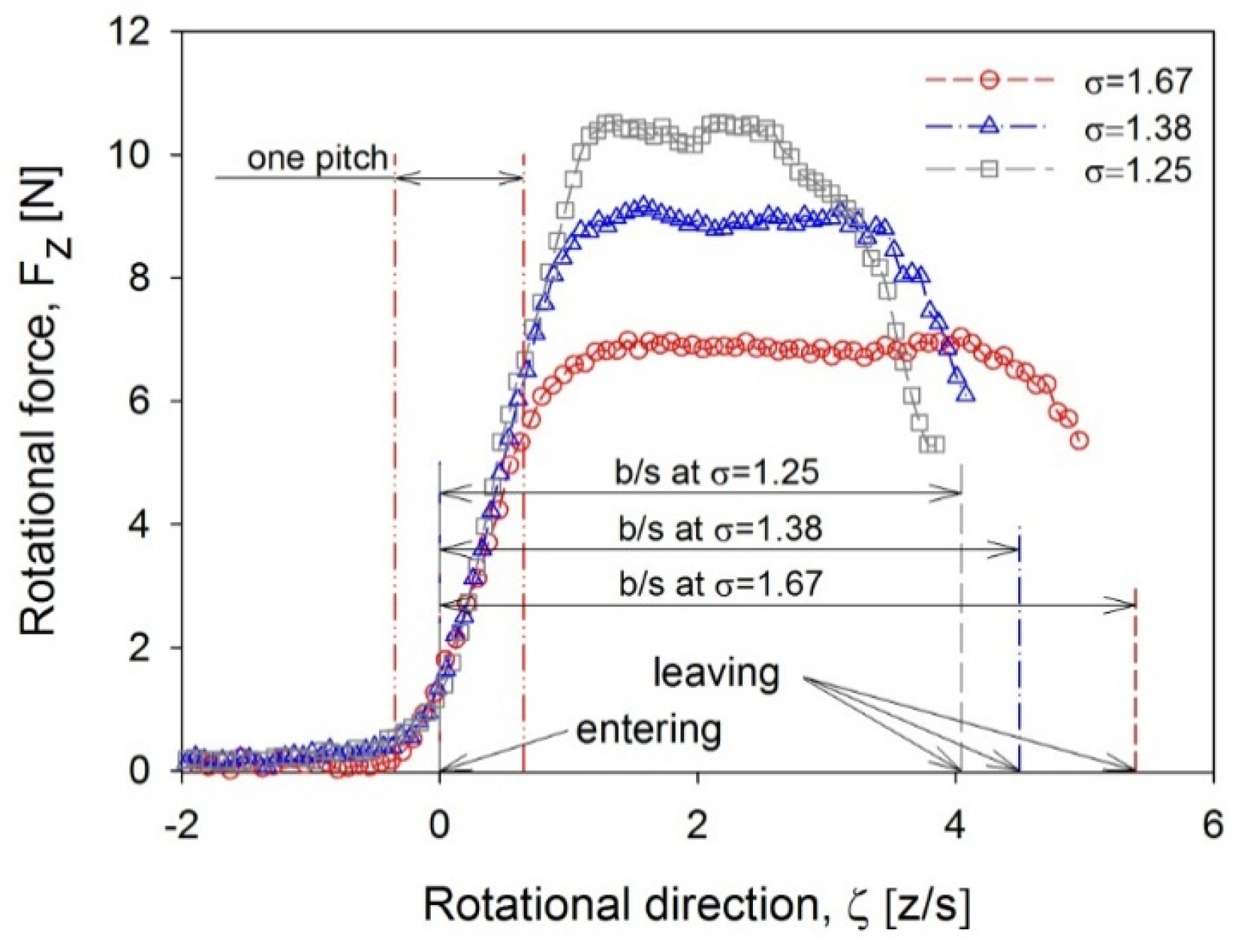

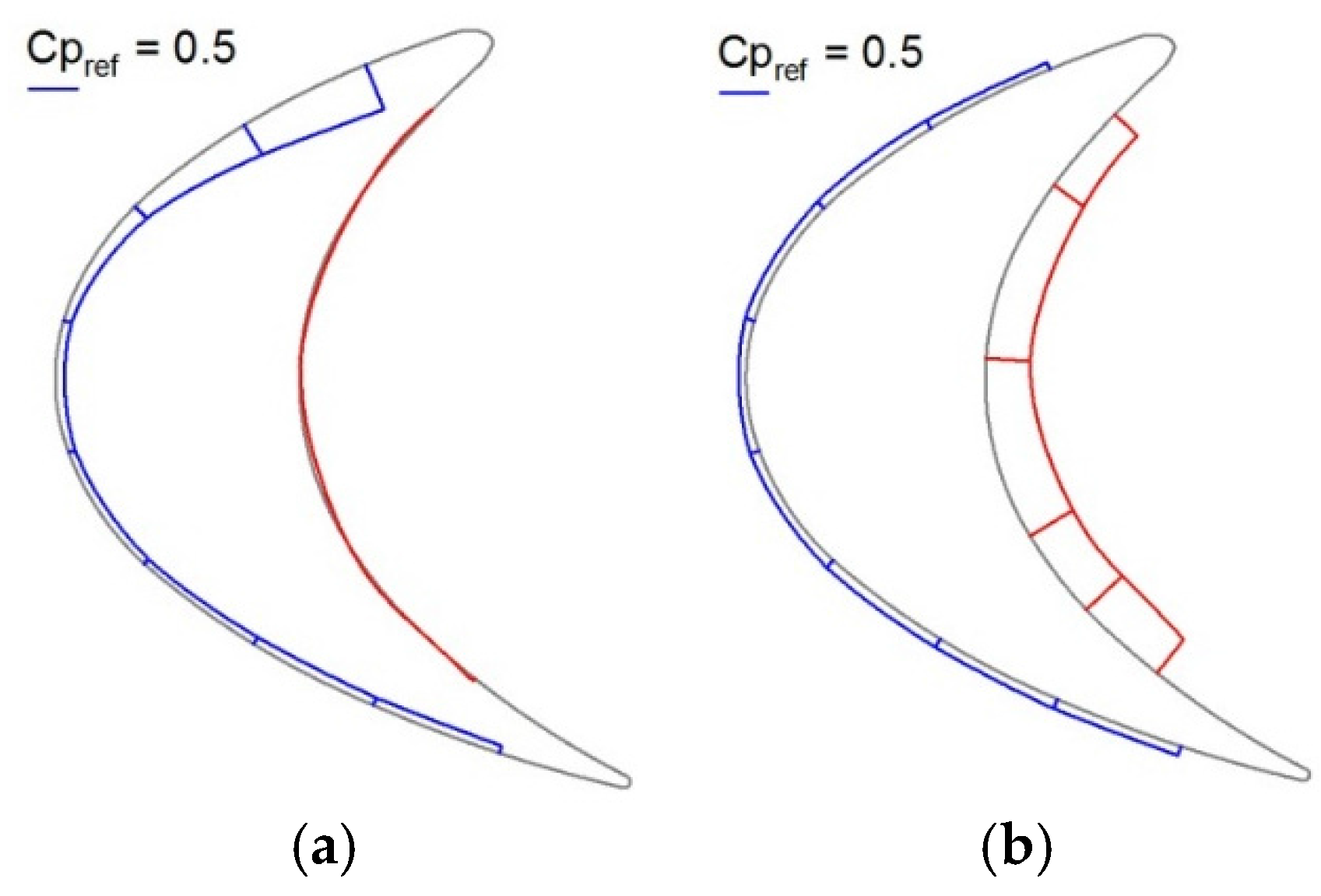
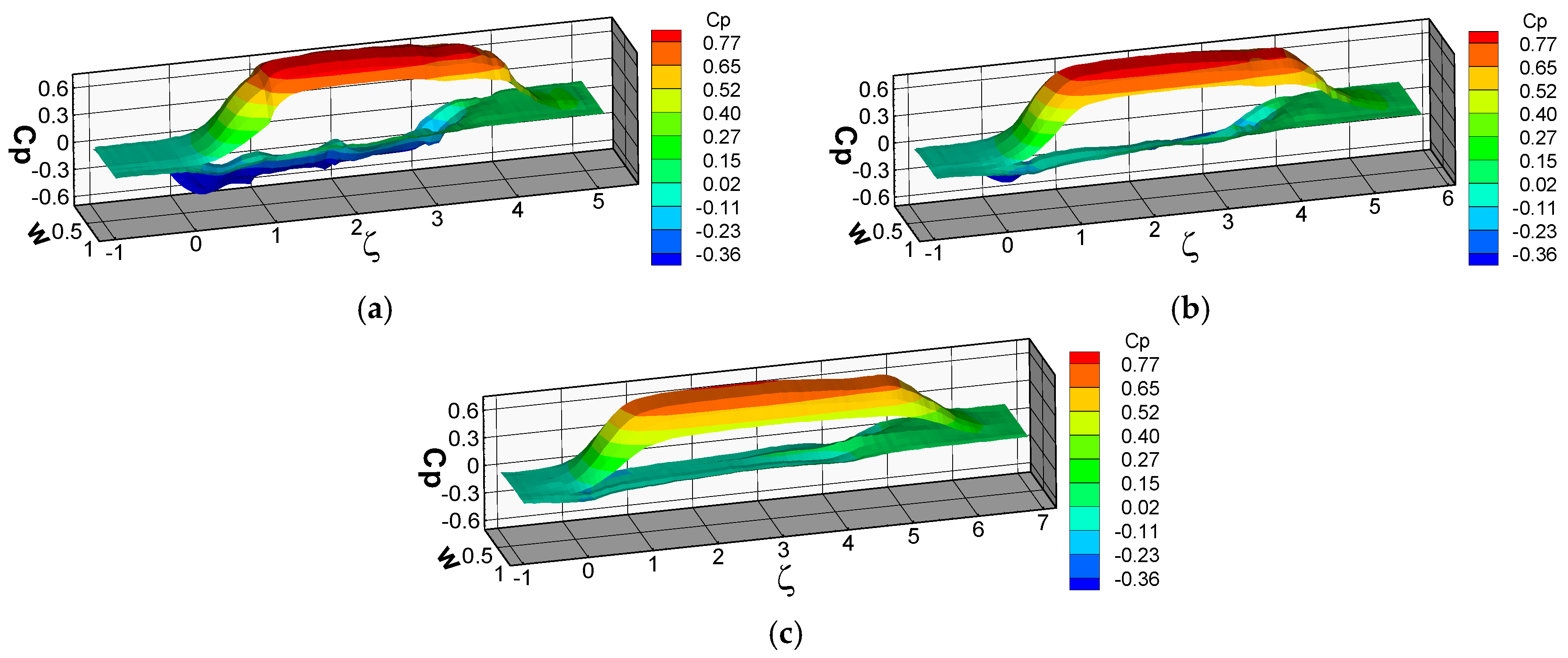
3.3. Nozzle Flow Angle of α = 58°
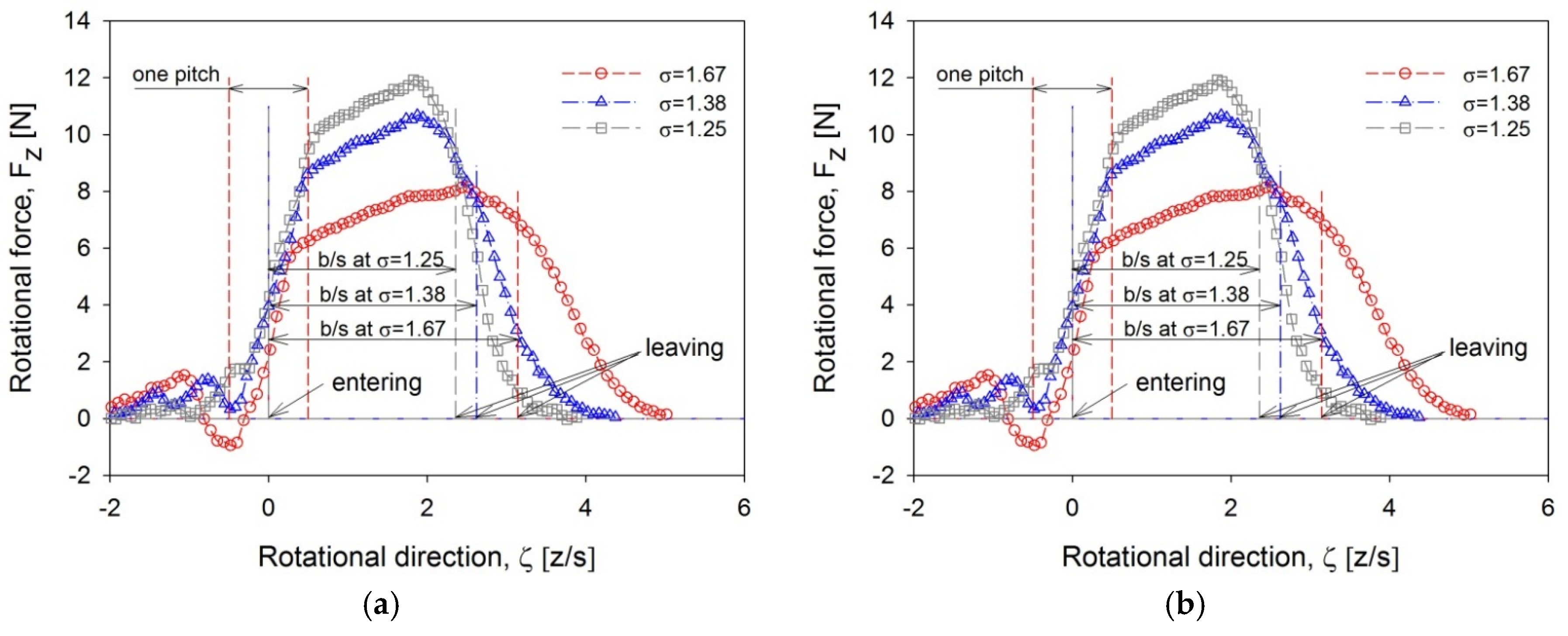
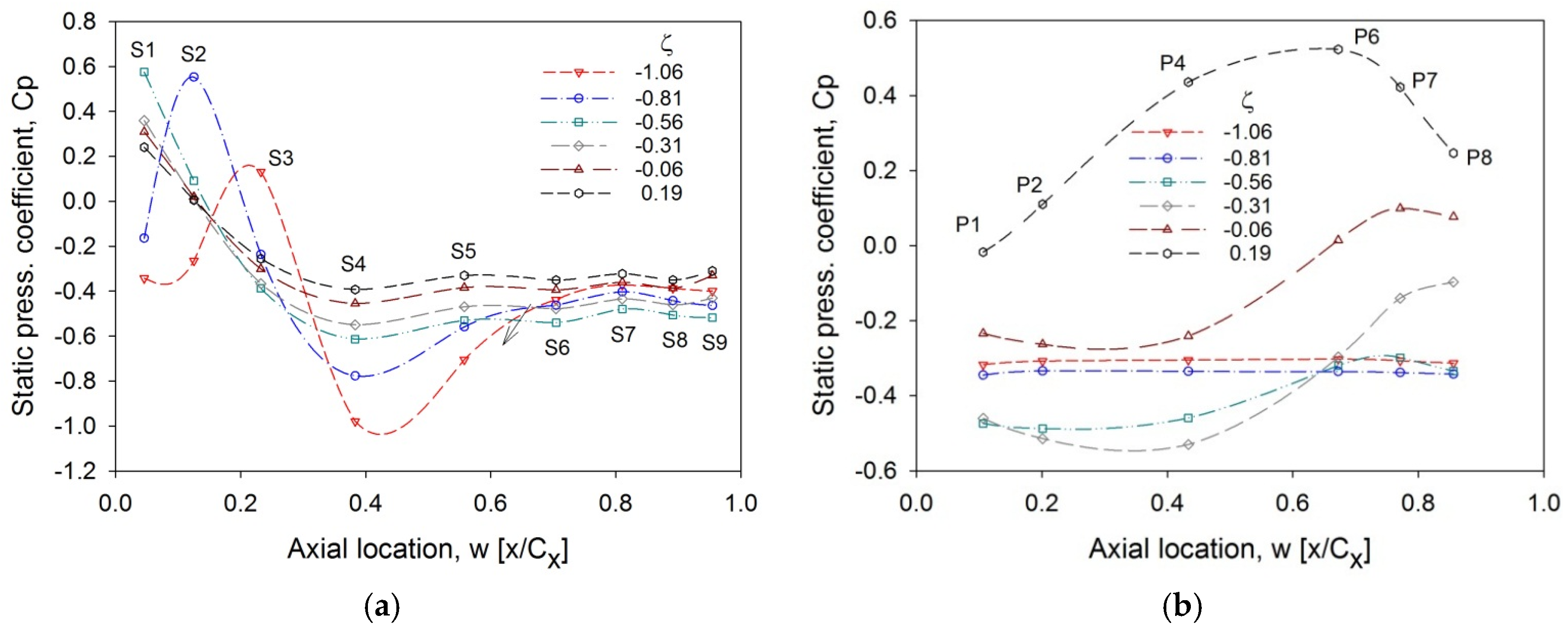

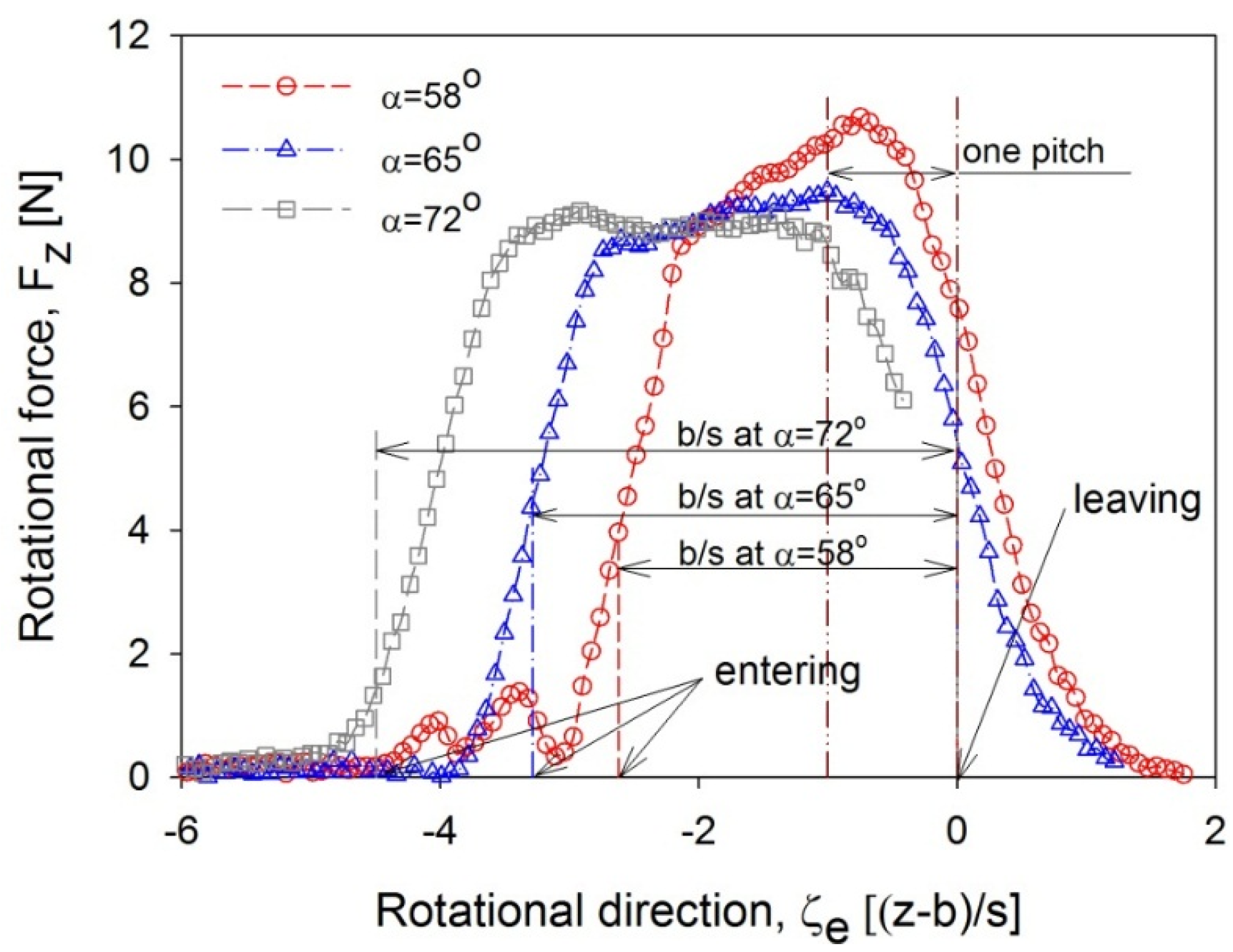
4. Conclusions
Acknowledgments
Author Contributions
Conflicts of Interest
References
- Pei, G.; Li, J.; Li, Y.; Wang, D.; Ji, J. Construction and dynamic test of a small-scale Organic Rankine cycle. Energy 2011, 36, 3215–3223. [Google Scholar] [CrossRef]
- Kang, S.H. Design and experimental study of ORC and radial turbine using R245fa working fluid. Energy 2012, 41, 514–524. [Google Scholar] [CrossRef]
- Capata, R.; Hernandez, G. Preliminary design and simulation of a turbo expander for small rated power organic Rankine cycle (ORC). Energies 2014, 7, 7067–7093. [Google Scholar] [CrossRef]
- Pierobon, L.; Nguyen, T.; Mazzucco, A.; Lasenn, U.; Haglind, F. Part-load performance of a wet indirectly fired gas turbine integrated with the organic Rankine cycle turbogenerator. Energies 2014, 7, 8294–8316. [Google Scholar] [CrossRef] [Green Version]
- Cho, S.Y.; Cho, C.H.; Ahn, K.Y.; Lee, Y.D. A study of the optimal operating conditions in the organic Rankine cycle using a turbo-expander for fluctuations of the available thermal energy. Energy 2014, 64, 900–911. [Google Scholar] [CrossRef]
- Bohn, D.; Gier, J.; Ziemann, M. Influence of the cross-over channel geometry on the flow equalization in partial-admission turbines. VGB PowerTech. Engl. Ed. 1988, 78, 49–54. [Google Scholar]
- Musatkin, N.F.; Tikhonov, N.T. Influence of upper and lower overlap on efficiency of partial-admission axial air microturbine. Sov. Aeronaut. 1979, 22, 95–97. [Google Scholar]
- Skopec, J.; Vomela, L.; Tajc, L.; Polansky, J. Partial steam admission in an axial turbine stage. In Proceedings of the IMechE International Conference on Third European Conference on Turbomachinery’99, Conference Transactions, London, UK, 2–5 March 1999; pp. 681–691.
- Cho, S.Y.; Cho, T.H.; Choi, S.K. An experimental study of the performance characteristics with four different rotor blade shapes on a small mixed-type turbine. J. Mech. Sci. Technol. 2005, 19, 1478–1487. [Google Scholar] [CrossRef]
- Sutton, R.F.; Boynton, J.L.; Scheer, D. Small, two-stage, partial admission turbine. In Proceedings of the 1985 JANNAF Propulsion Meeting: the Town & Country Hotel, San Diego, CA, USA, 9–12 April 1985.
- Doyle, M.D.C. Theories for predicting partial-admission losses in turbines. J. Aerosp. Sci. 1962, 29, 489–490. [Google Scholar] [CrossRef]
- Ohlssson, G.O. Partial-admission turbines. J. Aerosp. Sci. 1962, 29, 1017–1028. [Google Scholar] [CrossRef]
- Balje, O.E.; Binsley, R.L. Axial turbine performance evaluation Part A—Loss geometry relationships. J. Eng. Power 1968, 19, 341–348. [Google Scholar]
- Yahya, S.M. Partial admission turbines and their problems. Bull. Mech. Eng. Ed. 1970, 9, 263–273. [Google Scholar]
- Korematsu, K.; Hirayama, N. Performance Estimation of Partial Admission Turbines. In Proceedings of the ASME 1979 International Gas Turbine Conference and Exhibit and Solar Energy Conference, San Diego, CA, USA, 12–15 March 1979.
- Verneau, A. Supersonic Turbines for Organic Fluid Rankine Cycles from 3 kW to 1300 kW. Von Karman Inst. Fluid Dyn. 1987, 7, 1–22. [Google Scholar]
- Cho, S.Y.; Cho, C.H.; Kim, C. Performance prediction on a partially admitted small axial-type turbine. JSME Int. J. Ser. B Fluid. Therm. Eng. 2006, 49, 1290–1297. [Google Scholar] [CrossRef]
- Yahya, S.M. Some tests on partial admission turbine cascades. Int. J. Mech. Sci. 1969, 11, 853–866. [Google Scholar] [CrossRef]
- Cho, S.Y.; Cho, C.H.; Ahn, K.Y.; Kim, Y.C. Forces and surface pressure on a blade moving in front of the admission region. J. Fluid. Eng. 2010, 132. [Google Scholar] [CrossRef]
- Cho, S.Y.; Ahn, K.Y.; Lee, Y.D.; Kim, Y.C. Pressure and force on a blade row operated in partial admission with different solidity. J. Mech. Sci. Technol. 2013, 27, 387–396. [Google Scholar] [CrossRef]
© 2015 by the authors; licensee MDPI, Basel, Switzerland. This article is an open access article distributed under the terms and conditions of the Creative Commons by Attribution (CC-BY) license (http://creativecommons.org/licenses/by/4.0/).
Share and Cite
Cho, S.-Y.; Cho, C.-H.; Rim, C.W.; Choi, S.-K. Experimental Study in a Cascade Row for Improving the Performance of a Partially Admitted Turbo-Expander. Energies 2015, 8, 13576-13589. https://doi.org/10.3390/en81212385
Cho S-Y, Cho C-H, Rim CW, Choi S-K. Experimental Study in a Cascade Row for Improving the Performance of a Partially Admitted Turbo-Expander. Energies. 2015; 8(12):13576-13589. https://doi.org/10.3390/en81212385
Chicago/Turabian StyleCho, Soo-Yong, Chong-Hyun Cho, Chae Whan Rim, and Sang-Kyu Choi. 2015. "Experimental Study in a Cascade Row for Improving the Performance of a Partially Admitted Turbo-Expander" Energies 8, no. 12: 13576-13589. https://doi.org/10.3390/en81212385





